the Virgin of Guadalupe- a Philippine-Mexican connection
As historical bloodlines go, Mexicans and Filipinos share an interminable affinity, thanks to the same conquistador- Imperial Spain. In an almost physical sense, the two cultures were bridged by a navigational galleon “hi-way” which persisted for 250 years, from 1565 to 1815. This commercial link between the cities of Manila and Acapulco bloated the coffers of Spain, promoted an eventual immigration by the tens of thousands and in the process, inevitably and deeply acculturated the two racially divergent nations.
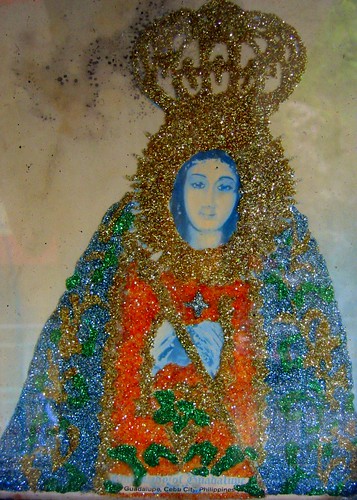
a glitter-laden stamp of the Virgin of Guadalupe at the Guadalupe Cave, Cebu City, the Philippines
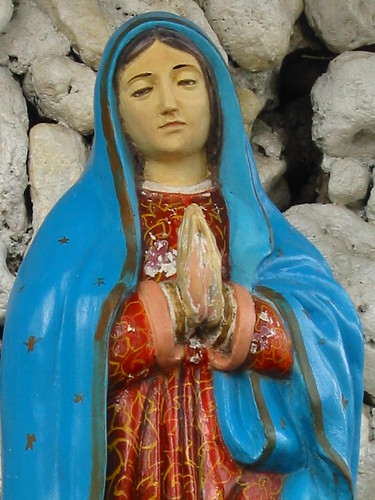
a statue in a grotto in Naga, Cebu
Take language. Do you know that the Tagalog word “palengke” may have originated from the Mexican “palenque”? The synonymous “tiangge” is likewise derivative of the Mexican “tiangui”. Mexico was also the likely source of the agricultural products which still carried the Castilian names like achuete, cacao, calabaza, camachile, camote and chico. Even the Mexican monetary standard, the peso, was adopted in the Philippines. In return, the Philippines exported products and the name terms for the Philippine mango, nipa and the coconut wine “tuba”.
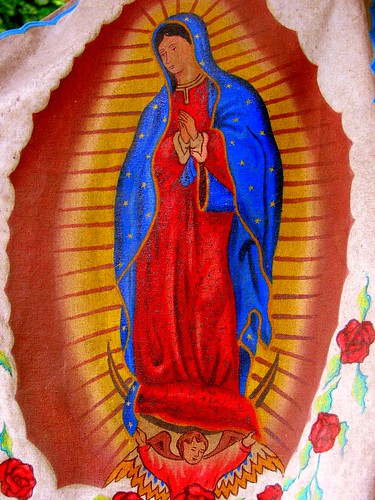
an image printed on canvas at the Guadalupe Cave
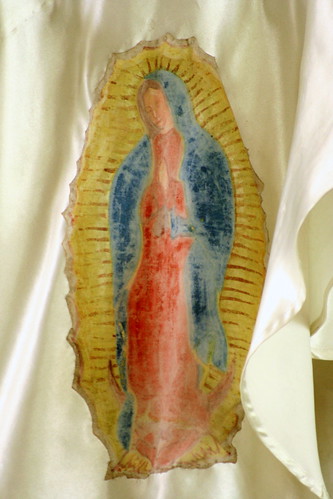
a banner with a painted image of the Lady, the Church of Guadalupe, barangay Guadalupe, Cebu City
In religion, the Mexican influence could no more be demonstrated by the veneration of the Virgin of Guadalupe. This representation of the Marian apparition in 16th century Mexico is in fact the Patron Lady of the Philippines at large and of Cebu in particular.

a giant statue at the Guadalupe cave, Cebu City, the Philippines

a plaster figurine at a grotto in the cave of Guadalupe, Cebu City
In Cebu City can be found an eponymously named barangay where a replica of the Guadalupe image from Spain was said to have been long venerated. According to accounts, when the Filipinos revolted against the Spanish in the end of the 19th century, the statue was thought to have been lost in the skirmishes but a local devotee hid the centuries-old statue in a mountainous cave. Several years later, it was discovered intact and unscathed and the place is now named Guadalupe.
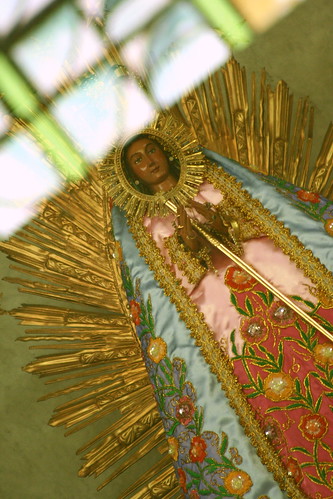
the statue of Guadalupe in the Church of Guadalupe, Cebu City
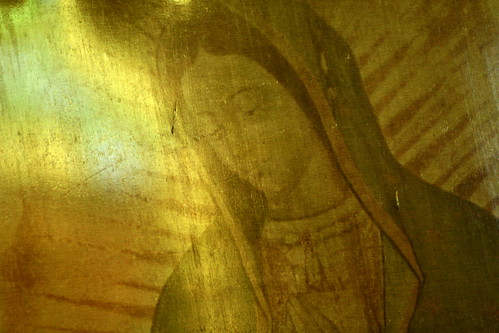
Guadalupe on wood, the Church of Guadalupe, Cebu City
All throughout Cebu, the Virgin can be found in various forms, from life-size statues, sculptures, prints and doll-sized figurines to even cardboard prayer stamps. As it turns out, the Virgin unwittingly has become the epitome of “primitive” religious art – as opposed to classical Roman – not just Mexico but also in the Philippines. Ethnic expression has found a home.

the main altar inside the cave of Guadalupe, barangay Guadalupe, Cebu City






5 comments:
I just ran across your blog and find it fascinating! I had never thought about the connection between the two cultures before but you are exactly right - there is a connection. I love your photographs and explored your past posts to look at them. Very nice.
I agree, we have a lot in common with the Mexicans. Even Americans like to hire them for work even if they have no proper visas in the US because just like Pinoys, they really demonstrate their willingness to work hard.
thanks! so true. Filipinos and Mexicans share so much in experience and faith.
i enjoyed reading your post. you obviously did a lot of research and your photos are awesome
more power and god bless,
lester
thanks Lester!
Post a Comment